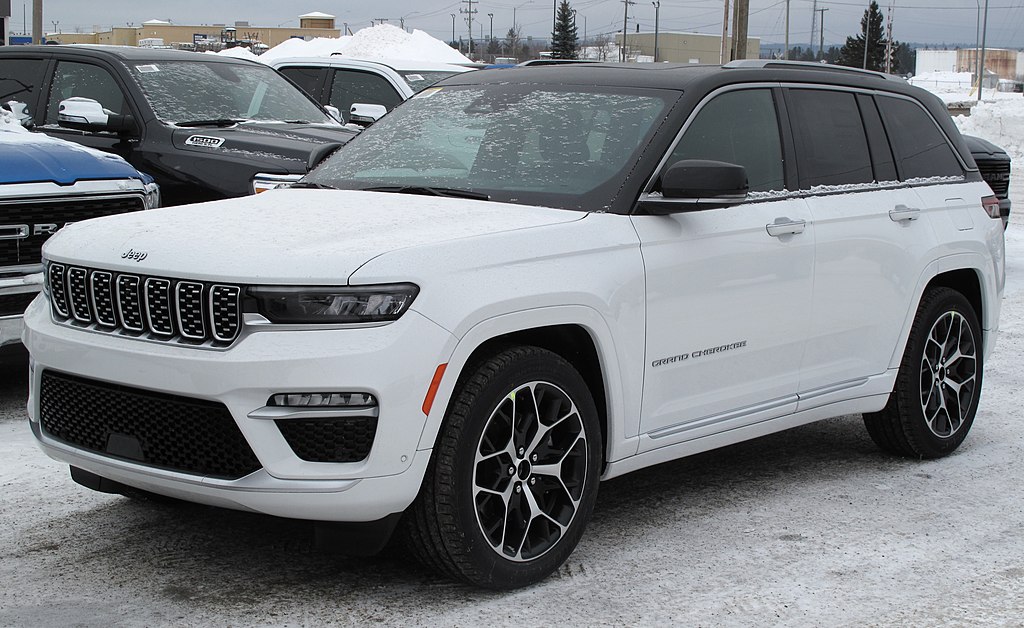Luxury SUV Deals: Smart Ways to Save on Premium Rides
Luxury SUVs blend comfort, technology, and safety with the versatility drivers want. But getting a great deal on a premium model requires more than waiting for a sale. From understanding manufacturer incentives to timing your purchase and considering certified pre-owned options, you can trim thousands off the out-the-door price without compromising on the features you love. This guide outlines practical strategies, real-world pricing snapshots, and the pitfalls to avoid when shopping for luxury SUV deals in your area.

What does bulk_create_keyword mean for buyers?
You may occasionally see terms like bulk_create_keyword in online listings or dealer pages. This is typically a placeholder from digital marketing templates, not a feature, discount, or code that affects pricing. Treat it as an internal tag used by content systems. Focus instead on tangible offer details such as manufacturer incentives, APR or money factor, residual values on leases, and itemized dealer fees. If a page appears templated or generic, verify specifics directly with the seller, and compare the written quote to the final buyer’s order before you sign.
Where the biggest savings come from
Several predictable moments produce stronger luxury SUV deals. End-of-model-year transitions often mean greater flexibility, especially when a refresh or redesign is arriving. Demo or courtesy vehicles used for test drives may carry thousands in discounts while retaining new-car financing rates. Certified pre-owned (CPO) models, typically 1–3 years old, can deliver strong value via extended warranty coverage and lower depreciation. Stacking offers matters too: combine manufacturer incentives (loyalty, conquest, military, or corporate partner rebates) with dealer discounts and, where available, low-APR financing. Finally, inventory levels influence pricing—if your color/trim is widely stocked locally, negotiation leverage improves.
Lease, finance, or CPO: which path saves more?
Leasing can be cost-effective if the model has strong residual values and attractive money factors, and if you prefer to upgrade every few years. It also typically keeps monthly payments lower than financing the same vehicle. Financing suits drivers who plan to keep the car beyond the loan term and want unlimited mileage. If you choose this route, compare promotional APRs from the brand’s captive lender to pre-approvals from banks or credit unions. CPO purchasing often splits the difference: you may save 15–30% off original MSRP depending on age and mileage, gain warranty coverage, and avoid steep early depreciation, albeit with used-vehicle financing rates that can be slightly higher than new-car promos.
Negotiation playbook with local services in mind
Start by building a shortlist of trims and must-have features across a few brands. Request itemized, out-the-door quotes from multiple dealerships in your area, specifying the same VIN or build. Ask for the lease worksheet (with money factor, residual, and fees) or the buyer’s order (with all line items) to make apples-to-apples comparisons. Research standard dealer fees in your state and push back on unnecessary add-ons like nitrogen tires or paint sealants you didn’t request. Bring a strong trade-in strategy: obtain appraisals from online buyers and local services to use as leverage. Lastly, keep financing flexible—arrive with a pre-approval so dealers must beat a real number.
Real-world pricing snapshots
Below are broad, real-world estimates for popular luxury SUVs. Actual pricing varies by trim, options, region, credit tier, and market conditions. Use this as a starting framework when evaluating quotes.
| Product/Service | Provider | Cost Estimation |
|---|---|---|
| X5 (xDrive40i and similar trims) | BMW | MSRP typically around $65,000–$80,000+ depending on options; outgoing model-year discounts often 5–10% off MSRP; competitive lease programs when residuals are strong. |
| GLE (350/450 series) | Mercedes-Benz | MSRP generally about $60,000–$80,000+; discounts vary by inventory; lease costs hinge on money factor and residuals, with stronger terms on higher-volume trims. |
| Q7 (45/55 TFSI) | Audi | MSRP commonly $60,000–$75,000+; outgoing model-year and courtesy vehicles can yield notable savings; promotional APRs available periodically for qualified buyers. |
| RX (350/500h) | Lexus | MSRP often $50,000–$65,000+; Lexus incentives may be modest but steady; lease programs can be compelling on popular configurations. |
| XC90 (B5/B6, plus mild hybrid variants) | Volvo | MSRP usually $56,000–$75,000+; incentives can be competitive on remaining inventory; check CPO for strong value on 1–2 year-old models. |
Prices, rates, or cost estimates mentioned in this article are based on the latest available information but may change over time. Independent research is advised before making financial decisions.
Understand the total cost of ownership
A great purchase price is only part of the equation. Budget for insurance (luxury SUVs often cost more to insure due to parts and repair complexity), premium tires (larger sizes wear faster and cost more), routine maintenance, and, if applicable, extended warranty or service plans. Fuel or charging costs also vary: turbocharged gas engines may require premium fuel, while plug-in hybrids can lower running costs if you charge at home. Resale value matters too; brands with strong reliability reputations and high demand can offset higher initial prices by retaining value over time.
A quick checklist to evaluate a deal in your area
-
Compare at least three itemized quotes for the same build or VIN.
-
Ask for current manufacturer incentives and verify eligibility (loyalty, conquest, partner programs).
-
For leases, review money factor, residual, acquisition fee, and mileage limits; for loans, compare APR and term length across lenders.
-
Check inventory levels locally; if your preferred spec is plentiful, negotiate more aggressively.
-
Consider demo or CPO alternatives with documented service history.
-
Review add-ons line by line; decline anything you don’t need.
-
Confirm future service convenience—loaner policies, local services availability, and maintenance plan costs.
In summary, the strongest luxury SUV deals come from timing, transparency, and a wide-angle view of options. By comparing multiple offers, weighing lease versus finance versus CPO, and accounting for total ownership costs, you can secure a premium model that fits both your lifestyle and budget—without relying on flashy promotions or uncertain promises.






